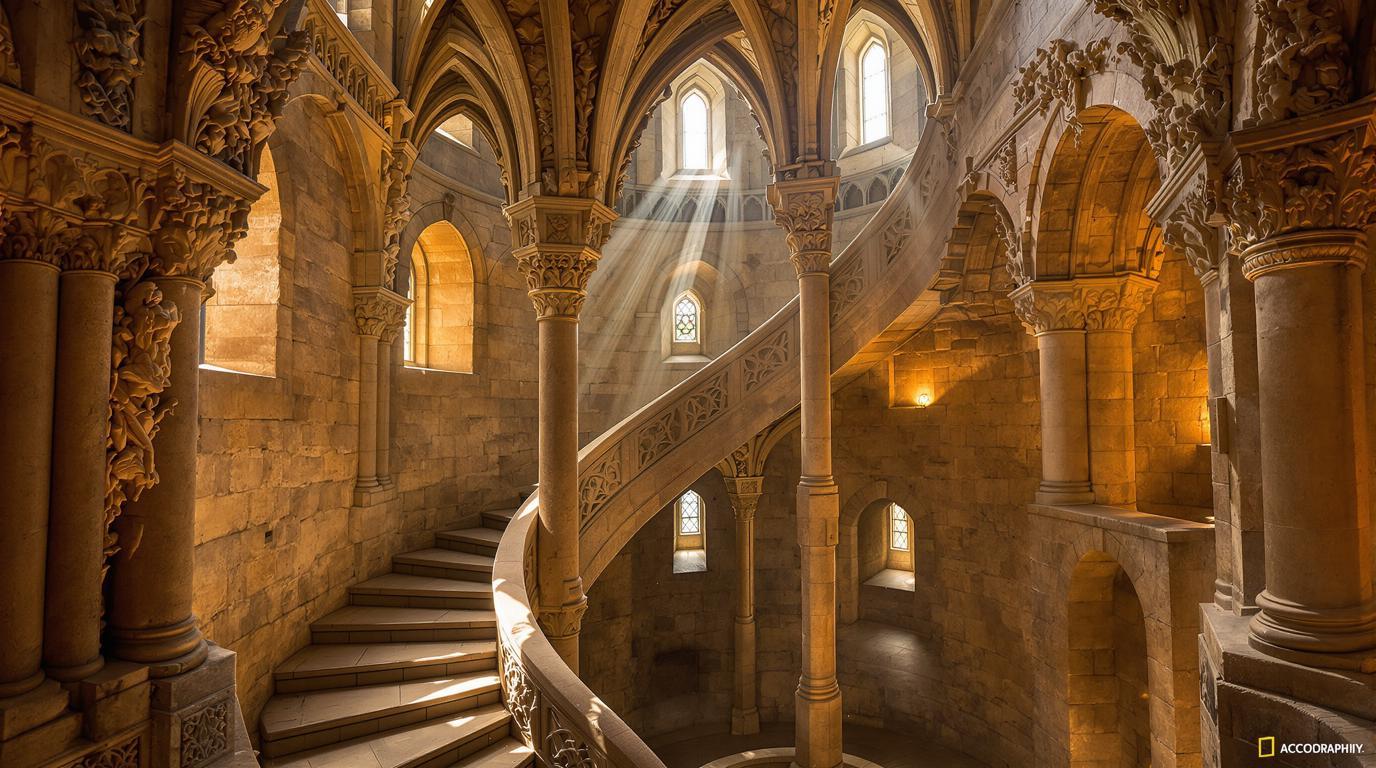This tiny French village built into limestone cliffs hides a Romanesque abbey with mythical beasts most tourists miss
The medieval treasure hidden in France’s Ardèche
In the sunlit Rhône Valley where medieval history meets Mediterranean climate, Cruas stands as one of France’s best-kept secrets. This small commune of just 2,954 residents harbors an 11th-century architectural marvel that rivals more famous French landmarks—yet remains blissfully overlooked by international tourists.
Walking through Cruas feels like stepping through a time portal. The village’s narrow lanes wind between white limestone buildings that seem to grow organically from the hillside. But it’s what lies beneath the abbey church that truly distinguishes this hidden gem.
“Our crypt contains some of the most remarkable Romanesque sculptures in southern France,” explains Marie Leconte, local historian. “The bestiary of mythical creatures carved into the columns tells stories that have survived nearly a thousand years.”
A subterranean world of ancient beasts
Descend the spiral staircase beneath Cruas Abbey, and you’ll discover an underground chamber that feels suspended in time. The 11th-century crypt, illuminated by soft light filtering through narrow windows, houses extraordinary stone carvings of griffins, lions, and fantastical creatures that have silently witnessed centuries of history.
Unlike the crowded catacombs of Paris or Rome, here you’ll likely find yourself alone with these medieval masterpieces. The bestiary represents one of France’s best-preserved examples of Romanesque sculpture, with each beast carrying symbolic meaning that once educated a largely illiterate population.
The monastic tribune: architectural rarity
What truly distinguishes Cruas Abbey is its monastic tribune—an elevated gallery where monks once gathered for prayer. This architectural feature, exceedingly rare in French Romanesque churches, offers both historical significance and spectacular views of the nave below.
When morning light streams through the eastern windows, the tribune becomes a stage for a mystical light show as sun rays dance across ancient stone. It’s a photographer’s dream and a spiritual experience that rivals nature’s perfect symphony found in Croatia’s famous lakes.
Where industrial history meets medieval charm
Cruas presents fascinating contrasts. The village’s medieval core sits just kilometers from the ultra-modern Cruas-Meysse Nuclear Power Plant, whose visitor center offers an unexpected educational detour. This juxtaposition of ancient and cutting-edge creates a uniquely French tableau.
The surrounding white limestone quarries that provided building materials for centuries still operate today, creating dramatic cliffscapes that glow golden at sunset. These quarries represent both Cruas’s industrial heritage and its visual signature.
“The limestone from our quarries built not just our village, but our identity,” says Jean-Paul Moreau, fifth-generation quarry worker. “The same stone that forms our abbey walls has been extracted continuously since Roman times.”
Beyond the village: Mediterranean adventures
While Cruas itself merits exploration, it also serves as an ideal base for discovering the Ardèche region. Within easy driving distance lie lavender fields, ancient Roman roads, and charming villages like Mirmande—classified among France’s most beautiful.
For those seeking more exotic accommodations than Cruas’s modest inns, Turkey’s affordable cave hotels might provide inspiration for future travels. Closer to home, France’s own Caribbean-like islands offer another off-the-beaten-path adventure.
Experience Cruas like a local
Visit Cruas in spring or fall when temperatures hover comfortably between 65-75°F, perfect for exploring without summer crowds. The André Auclair Museum showcases local art while providing context for the region’s cultural significance.
The D86—a road following an ancient Roman route—offers spectacular cycling along the Rhône. For history enthusiasts, France’s medieval villages with ecological innovations provide fascinating parallels to Cruas’s own monastic heritage.
As Mediterranean light bathes the limestone village in golden hues each evening, Cruas reveals its most enchanting face. This isn’t just another French village—it’s a living museum where you can touch history, breathe in centuries of stories, and experience France’s soul away from tourist crowds.
